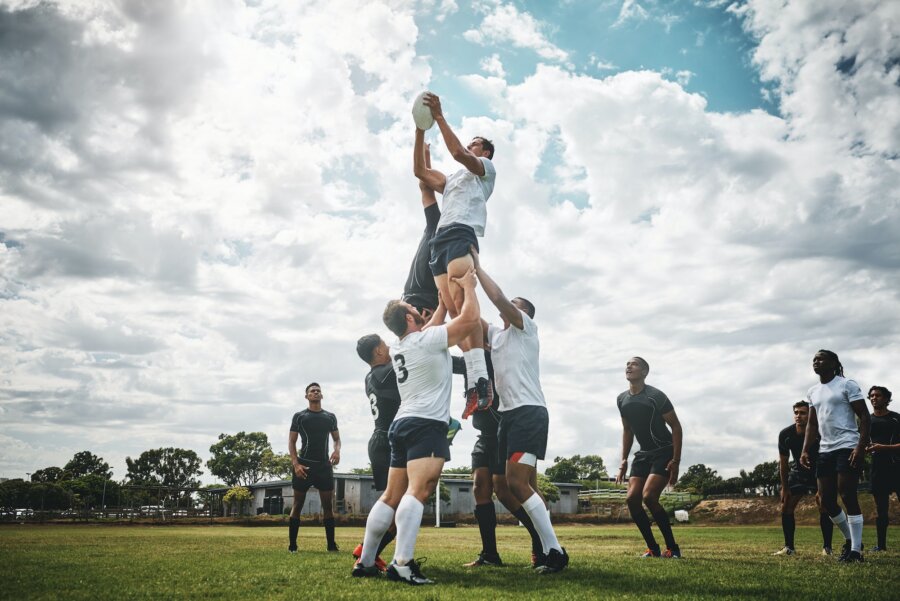The Ultimate Guide to Super Rugby in New Zealand

Super Rugby is one of the most exciting rugby competitions in the world, and it’s no different in New Zealand. With five teams from across the country competing, there’s never a dull moment during the season. Here’s your complete guide to the league in New Zealand!
Super Rugby is the largest professional rugby union competition in the Southern Hemisphere. Both the teams and the format of the Super Rugby season have changed numerous times throughout its history.
The History of Super Rugby in New Zealand
Super Rugby has been a staple of New Zealand rugby since its inception in 1996. Initially known as the Super 12, the competition featured teams from Australia, New Zealand, and South Africa.
In 2011, the competition expanded to include teams from Argentina and Japan and was renamed Super Rugby. Today, the competition features 15 teams from five countries, with New Zealand being represented by the Blues, Chiefs, Crusaders, Highlanders, and Hurricanes.
When the South African Rugby Union decided to leave the Southern Hemisphere Rugby Union to join the Northern Hemisphere, New Zealand and Australia held domestic Super Rugby tournaments and also announced a Trans-Tasman tournament.
Then, in 2022, Super Rugby Pacific was formed. Rugby Australia and New Zealand Rugby made an official agreement on a new format for Super Rugby comprising of five Australian teams, five teams from New Zealand, and two new additions: Fijian Drua from Fiji and Moana Pasifika from the Pacific Islands.
2023 marks the 28th season of Super Rugby, which is the annual rugby union tournament hosted and organised by SANZAAR. The regular season begins in February 2023, with 14 games, comprising 7 home games and 7 away games. Throughout the season, each team will earn points based on the outcome of their fixtures and will be ranked in the league accordingly. Based on those rankings, the top eight teams qualify for the play-offs, which consist of a quarter-final, semi-final and final. The Super Rugby final will be held in June 2023. The Super Rugby competition will end in time for the international rugby season to begin. The Crusaders won the 2022 Super Rugby Pacific final, which made them 11-time champions of the competition.
How the Tournament Works
The Super Rugby season runs from February to August, with each team playing 16 regular-season games. The teams are split into three conferences based on their geographical location, and each team plays the other four teams in their conference twice, once at home and once away. They also play four teams from each of the other two conferences, two at home and two away. The top eight teams at the end of the regular season qualify for the playoffs, which culminate in a grand final to decide the champion.

How Can I Follow Super Rugby?
Don’t want to miss out the cut-throat action of NZ’s premier rugby league? There are many ways to keep up! We’ve identified simple ways you can start following the sport from the comfort of your home.
Watch the Games Live or On-Demand
The easiest way is to watch Super Rugby games live or on demand. In New Zealand, Sky Sports has the broadcasting rights, and they offer live coverage of all the games and on-demand replays.
Follow the Teams on Social Media
Another way to keep up with the league is to follow the teams on social media. Each of the five New Zealand teams has an active social media presence, where they share news, updates, and behind-the-scenes content. You can follow them on Facebook, Twitter, Instagram, or other social media platforms to get the latest information about the teams and the competition.
Check the Super Rugby Website
The official website is another excellent resource for keeping up with the competition. The website offers news, match reports, highlights, and other features related to the competition. You can also use the website to check the schedule, standings, and statistics.
Read Rugby News Websites
If you’re a die-hard rugby fan, you may want to check out some rugby news websites to stay up-to-date on the league’s latest news. Websites such as RugbyPass, Rugby World, and Stuff Sport offer in-depth coverage of the competition, as well as other rugby news from around the world.

What is SANZAAR?
SANZAAR is an acronym that stands for South Africa, New Zealand, Australia and Argentina Rugby. The organisation oversees Super Rugby and the Rugby Championships in rugby union in the Southern Hemisphere. These tournaments are considered as some of the most reputable rugby tournaments globally.
SANZAAR was formed in 1996, but at that time, went by the name of SANZAR, as it only included South Africa, New Zealand and Australia. It was formed by the joining of the South African Rugby Union, the New Zealand Rugby Union and the Australian Rugby Union. In 2016, the Argentina Rugby Union also became a full member, and therefore the acronym became SANZAAR.
SANZAR was established in 1996, around the same time that rugby was officially declared as a professional sport. SANZAR has played a significant role in shaping the game of rugby in the Southern Hemisphere.
Over the years, SANZAAR has gone through a variety of changes of members, leaders and teams. Additionally, this has meant that the format of the rugby season and the championship tournaments has also gone through various changes. However, over the years, and even with all the external changes, the heart and soul of SANZAAR has remained the same, with an ethos that aims to enhance the quality, and strengthen the community around the game of rugby in the Southern Hemisphere.
Super 6
Before 1996, and before SANZAR, transnational competitions for rugby union teams were beginning to happen in the Southern Hemisphere, such as the South Pacific Championship, also known as the Super 6.
The Super 6 began in 1992, and consisted of three teams from New Zealand: Canterbury, Auckland and Wellington; two Australian teams: Queensland and New South Wales; and also Fiji’s national rugby team.
Super 10
A year later, in 1993, the Super 6 became the Super 10 tournament, as more teams were able to join, specifically South African teams.
The following teams participated in the first Super 10 tournament: New Zealand’s Waikato, Auckland, Otago and North Harbour, Australia’s Queensland and New South Wales, South Africa’s Natal, Transvaal and Northern Transvaal, and the Western Samoa team. Transvaal won the Super 10 in 1993, and Queensland won in both 1994 and 1995.
Super 12
The Super 6 and Super 10 competitions took place before rugby became professional, but in 1996, when SANZAR was formed, the Super 10 became the Super 12, and it was deemed the first official professional rugby tournament across New Zealand, South Africa and Australia.
The Super 12 competition featured the strongest rugby teams from New Zealand, South Africa and Australia. There were five teams from New Zealand, four from South Africa and three from Australia.
Super 14
In 2006, Australia and South Africa made a deal which meant that each of them could add one more team to the competition. As a result, the Super 12 became the Super 14.
Even though there were 14 teams participating in the competition, there were only ever two winning teams throughout the years of the Super 14 format. The Crusaders won the 2006 and 2008 tournaments, and the Bulls won the tournament in 2007, 2009 and 2010.
Super 15
In 2011, the Melbourne Rebels rugby team were added to the competition, representing Australia. The format of the conference, the regular season and the play-offs were changed as a result of the new addition. The Super 15 conference was divided into three separate conferences with five teams in each. The new format of the regular rugby season meant each team played the other teams within their conference, and also, four teams from each of the other conferences. Only six teams participated in the play-off finals: the winners from each of the three conferences, and also the three teams with the most competition points.
Super 18
In 2016, with the addition of new teams, Super Rugby expanded into new markets and reached new fan bases. In addition to the New Zealand, Australian and South African teams, Japan and Argentina also joined the competition, resulting in a total of 18 teams. Again, the format of the regular season and the finals changed, with 135 regular season matches, and eight teams competing in the play-offs, with seven matches to determine the overall winner.
The 18 teams were arranged in four conferences:
Australian Conference – Brumbies, Force, Rebels, Reds & Waratahs
New Zealand Conference – Blues, Chiefs, Crusaders, Highlanders & Hurricanes
Africa 01 Conference – Bulls, Cheetahs, Japan & Stormers
Africa 02 Conference – Argentina, Kings, Lions & Sharks
Conclusion
Super Rugby is an exciting and dynamic rugby competition that has been a mainstay of New Zealand rugby for over two decades. With five teams representing the country and a wealth of talent on display, there’s never a dull moment for followers of the league. Whether you’re a die-hard rugby fan or just looking for high-quality entertainment, Super Rugby in New Zealand is not to be missed.
